-
 Bitcoin
Bitcoin $116400
-1.69% -
 Ethereum
Ethereum $3731
2.87% -
 XRP
XRP $3.119
-1.00% -
 Tether USDt
Tether USDt $1.000
-0.04% -
 BNB
BNB $774.0
1.01% -
 Solana
Solana $181.0
-2.25% -
 USDC
USDC $1.000
0.02% -
 Dogecoin
Dogecoin $0.2314
-2.16% -
 TRON
TRON $0.3145
1.76% -
 Cardano
Cardano $0.8087
0.22% -
 Hyperliquid
Hyperliquid $43.01
0.68% -
 Stellar
Stellar $0.4247
-0.93% -
 Sui
Sui $3.758
1.42% -
 Chainlink
Chainlink $18.30
1.99% -
 Bitcoin Cash
Bitcoin Cash $551.4
5.66% -
 Hedera
Hedera $0.2482
3.08% -
 Avalanche
Avalanche $23.70
0.18% -
 Litecoin
Litecoin $115.1
2.44% -
 UNUS SED LEO
UNUS SED LEO $8.972
-0.36% -
 Shiba Inu
Shiba Inu $0.00001370
0.73% -
 Toncoin
Toncoin $3.146
0.74% -
 Ethena USDe
Ethena USDe $1.001
-0.03% -
 Uniswap
Uniswap $10.49
3.95% -
 Polkadot
Polkadot $4.044
1.42% -
 Monero
Monero $328.9
2.43% -
 Dai
Dai $0.9998
-0.03% -
 Bitget Token
Bitget Token $4.510
-1.10% -
 Pepe
Pepe $0.00001231
-1.68% -
 Aave
Aave $293.4
2.16% -
 Cronos
Cronos $0.1294
2.89%
Is the steep rise of the ADX curve of the DMI indicator accelerating the trend or about to reverse?
A sharp rise in ADX signals strengthening trend momentum in crypto markets; combine with +DI/-DI crossovers and volume to confirm bullish or bearish direction and avoid false reversal signals.
Jul 24, 2025 at 11:15 am
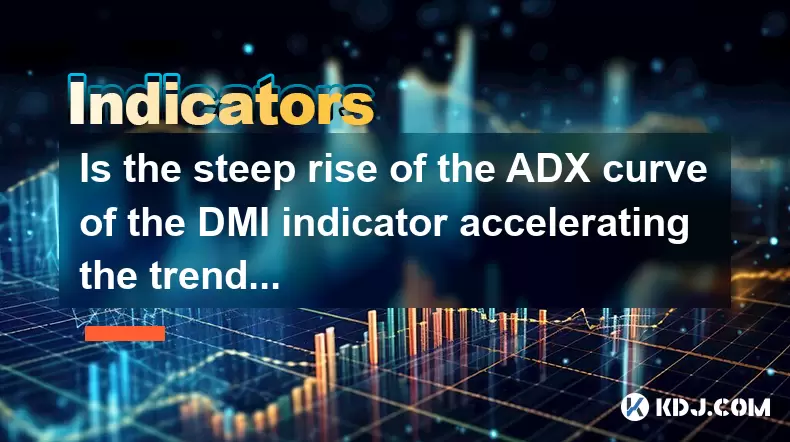
Understanding the DMI Indicator and Its Components
The Directional Movement Index (DMI) is a technical analysis tool used to identify the presence and strength of a trend in cryptocurrency price movements. It consists of three core components: the +DI (Positive Directional Indicator), the -DI (Negative Directional Indicator), and the ADX (Average Directional Index). The +DI measures the strength of upward price movement, while the -DI reflects the strength of downward movement. The ADX, derived from the difference between +DI and -DI, quantifies the overall strength of the trend regardless of direction. Values of ADX below 20 typically suggest a weak or ranging market, while readings above 25 indicate a developing trend, and values above 40 signal a strong trend.
The ADX curve does not indicate the direction of the trend but rather its momentum. A rising ADX means that the trend is gaining strength, whether bullish or bearish. Traders often misinterpret a steep rise in ADX as a signal of imminent reversal, but in reality, it frequently reflects an acceleration in trend strength. The key is to analyze the ADX in conjunction with the DI lines to determine whether the market is entering a phase of strong directional movement or preparing for exhaustion.
Interpreting a Steep Rise in the ADX Curve
When the ADX curve rises sharply, it indicates that the directional movement in the market is intensifying. In the context of cryptocurrency trading, where volatility is high, such a spike can occur during breakouts or strong momentum moves. A rapid increase in ADX from below 20 to above 30 in a short period suggests that a new trend is forming and gaining momentum. This is often accompanied by widening spreads between the +DI and -DI lines, confirming the dominance of either buyers or sellers.
For example, if the +DI crosses above the -DI at the same time the ADX begins to climb steeply, this reinforces a bullish trend acceleration. Conversely, if the -DI is above +DI with a rising ADX, it confirms bearish momentum. The steepness of the ADX rise is critical: a gradual incline suggests steady trend development, while a vertical surge may indicate a parabolic move, which in crypto markets can precede a pullback due to overextension.
ADX Peak and Potential Reversal Signals
While a rising ADX reflects trend strength, traders must watch for signs of trend exhaustion. The ADX typically peaks when the trend is at its strongest, and a subsequent decline in the ADX—despite price continuing in the same direction—can signal weakening momentum. This divergence is a potential precursor to a reversal. For instance, if Bitcoin’s price reaches a new high but the ADX starts to fall from a level above 50, it suggests that the upward move lacks broad participation or follow-through.
It is important to distinguish between a temporary plateau in ADX and a definitive downturn. A flattening ADX after a steep rise may simply indicate trend stabilization, not reversal. However, when the ADX begins to descend and both +DI and -DI start to converge, it often marks the end of a strong trend phase. In cryptocurrency markets, such conditions can quickly evolve into sideways consolidation or sharp corrections, especially if accompanied by high volume or extreme sentiment readings.
Combining ADX with Other Technical Tools for Confirmation
Relying solely on the ADX can lead to misleading interpretations. To enhance accuracy, traders should integrate the DMI with other indicators. One effective method is to use price action analysis alongside ADX behavior. For example, a steep ADX rise coinciding with a breakout from a well-defined resistance level in Ethereum adds credibility to the trend’s strength.
Another complementary tool is the Relative Strength Index (RSI). If the ADX is rising sharply while RSI enters overbought (above 70) or oversold (below 30) territory, it may highlight an overextended move. In such cases, a bearish RSI divergence (price making higher highs while RSI makes lower highs) during a high ADX environment can warn of an impending reversal.
Volume analysis is also crucial. A steep ADX increase supported by rising trading volume confirms strong market participation and increases the likelihood of trend continuation. Conversely, if volume declines during an ADX spike, it may suggest a lack of conviction, increasing the risk of a reversal.
Practical Steps to Monitor ADX Behavior in Crypto Trading
To effectively use the ADX within the DMI framework, traders should follow these steps:
- Open a cryptocurrency trading chart on platforms like TradingView or Binance and apply the DMI indicator.
- Set the default period (usually 14) unless optimizing for specific timeframes.
- Observe the relationship between +DI and -DI: a crossover can signal trend initiation.
- Track the slope and level of the ADX line: a move above 25 with increasing slope indicates strengthening trend.
- Watch for ADX peaking above 40–50 and then turning downward, especially if price action shows indecision like doji candles or long wicks.
- Cross-verify with support/resistance levels and volume data to assess sustainability.
Using multiple timeframes enhances reliability. For instance, a steep ADX rise on the 4-hour chart aligned with a rising ADX on the daily chart increases confidence in trend strength. On lower timeframes like 15-minute charts, ADX spikes may reflect short-term noise rather than sustainable trends.
Common Misinterpretations of ADX Movements
A frequent error is assuming that a high ADX value signals an upcoming reversal. In reality, ADX measures strength, not direction or exhaustion. A coin like Solana can maintain an ADX above 50 for days during a strong rally without reversing. The reversal only becomes likely when ADX starts to decline and the DI lines converge.
Another misconception is ignoring the base level from which ADX rises. A jump from 10 to 30 is more significant than a rise from 30 to 40, as it marks the transition from a sideways to a trending market. Traders should also avoid using ADX in isolation during low-volatility periods, such as post-major news events, where price may consolidate and ADX remains flat despite upcoming volatility.
FAQs
What does an ADX above 50 mean in a crypto market?
An ADX above 50 indicates an extremely strong trend. In cryptocurrencies, this often occurs during bull runs or sharp sell-offs. It does not imply a reversal is imminent; instead, it suggests the current trend has powerful momentum and may continue unless confirmed by reversal signals like DI crossovers or price pattern breakdowns.
Can ADX predict the start of a new trend?
The ADX itself does not predict trend direction, but a rising ADX from below 20 to above 25, especially when paired with a +DI/-DI crossover, can signal the beginning of a new trend. Traders use this combination to identify early momentum shifts in assets like Bitcoin or altcoins.
Why does ADX sometimes rise while price moves sideways?
This can occur during volatile consolidation phases where price swings are large but lack directional follow-through. In such cases, the ADX reacts to volatility rather than trend, which is why combining it with DI lines and price structure is essential to avoid false signals.
How do I adjust ADX settings for different crypto timeframes?
The default 14-period setting works well for daily and 4-hour charts. For shorter timeframes like 15-minute, reducing to 7–10 periods increases sensitivity. For weekly analysis, extending to 20–28 periods smooths noise. Always backtest changes against historical data for accuracy.
Disclaimer:info@kdj.com
The information provided is not trading advice. kdj.com does not assume any responsibility for any investments made based on the information provided in this article. Cryptocurrencies are highly volatile and it is highly recommended that you invest with caution after thorough research!
If you believe that the content used on this website infringes your copyright, please contact us immediately (info@kdj.com) and we will delete it promptly.
- Pump, Bonk, Buyback: A Wild Ride in Crypto Town!
- 2025-07-25 19:10:12
- Punisher Coin, Dogecoin, Shiba Inu: Meme Coin Mania in the 2025 Crypto Landscape
- 2025-07-25 19:10:12
- Celestia's Token Control: Buyback & Staking Overhaul in Focus
- 2025-07-25 19:50:11
- Altcoins, Bitcoin, and Crypto Coins: What's Hot in the NYC Crypto Scene?
- 2025-07-25 19:55:52
- Litecoin Price Breakout Imminent? Rally Potential Explored!
- 2025-07-25 17:30:12
- Ether ETFs Surge, Bitcoin Wobbles: Is an ETH Breakout Imminent?
- 2025-07-25 16:50:12
Related knowledge

How to interpret that the KDJ D line is downward for a long time but the price is sideways?
Jul 25,2025 at 07:00pm
Understanding the KDJ Indicator and Its ComponentsThe KDJ indicator is a momentum oscillator widely used in cryptocurrency trading to assess overbough...

What does it mean that the KDJ indicator forms a double bottom at a low level?
Jul 25,2025 at 05:08pm
Understanding the KDJ Indicator in Cryptocurrency TradingThe KDJ indicator is a momentum oscillator widely used in cryptocurrency trading to identify ...
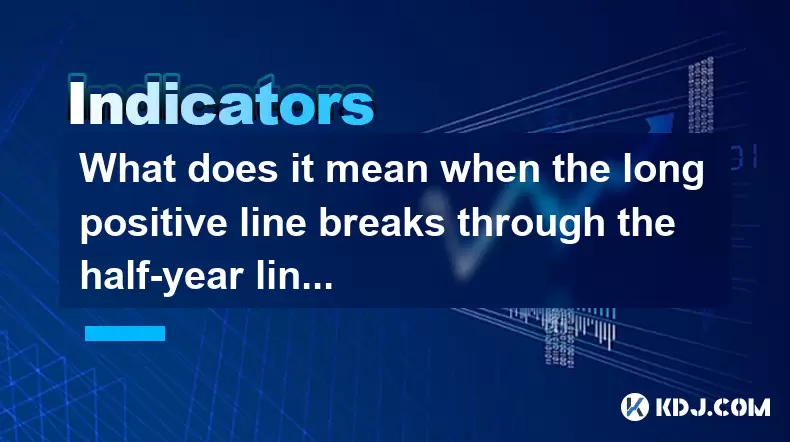
What does it mean when the long positive line breaks through the half-year line and then steps back?
Jul 25,2025 at 06:49pm
Understanding the Long Positive Line in Candlestick ChartsIn the world of cryptocurrency trading, candlestick patterns play a vital role in technical ...
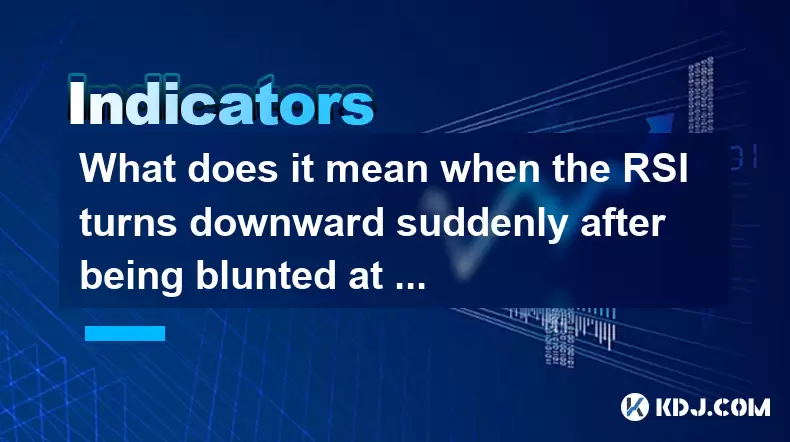
What does it mean when the RSI turns downward suddenly after being blunted at a high level?
Jul 25,2025 at 04:00pm
Understanding the RSI and Its Role in Technical AnalysisThe Relative Strength Index (RSI) is a momentum oscillator that measures the speed and change ...
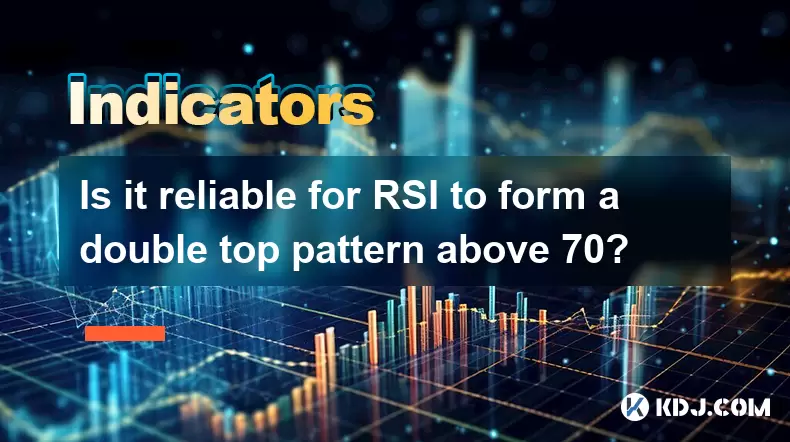
Is it reliable for RSI to form a double top pattern above 70?
Jul 25,2025 at 04:49pm
Understanding the RSI Indicator and Its Role in Technical AnalysisThe Relative Strength Index (RSI) is a momentum oscillator that measures the speed a...
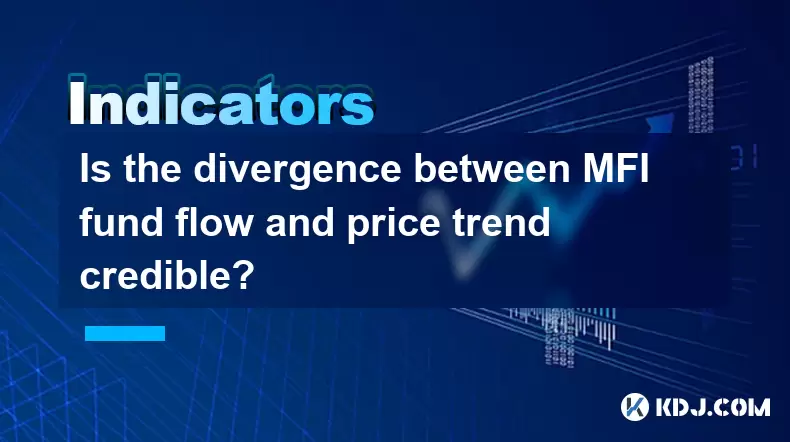
Is the divergence between MFI fund flow and price trend credible?
Jul 25,2025 at 12:01pm
Understanding MFI and Fund Flow in Cryptocurrency MarketsThe Money Flow Index (MFI) is a technical oscillator that combines price and volume to assess...

How to interpret that the KDJ D line is downward for a long time but the price is sideways?
Jul 25,2025 at 07:00pm
Understanding the KDJ Indicator and Its ComponentsThe KDJ indicator is a momentum oscillator widely used in cryptocurrency trading to assess overbough...

What does it mean that the KDJ indicator forms a double bottom at a low level?
Jul 25,2025 at 05:08pm
Understanding the KDJ Indicator in Cryptocurrency TradingThe KDJ indicator is a momentum oscillator widely used in cryptocurrency trading to identify ...

What does it mean when the long positive line breaks through the half-year line and then steps back?
Jul 25,2025 at 06:49pm
Understanding the Long Positive Line in Candlestick ChartsIn the world of cryptocurrency trading, candlestick patterns play a vital role in technical ...

What does it mean when the RSI turns downward suddenly after being blunted at a high level?
Jul 25,2025 at 04:00pm
Understanding the RSI and Its Role in Technical AnalysisThe Relative Strength Index (RSI) is a momentum oscillator that measures the speed and change ...

Is it reliable for RSI to form a double top pattern above 70?
Jul 25,2025 at 04:49pm
Understanding the RSI Indicator and Its Role in Technical AnalysisThe Relative Strength Index (RSI) is a momentum oscillator that measures the speed a...

Is the divergence between MFI fund flow and price trend credible?
Jul 25,2025 at 12:01pm
Understanding MFI and Fund Flow in Cryptocurrency MarketsThe Money Flow Index (MFI) is a technical oscillator that combines price and volume to assess...
See all articles

























































































